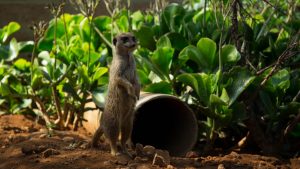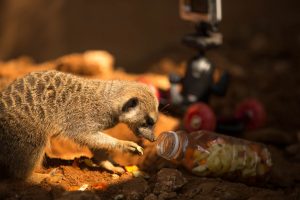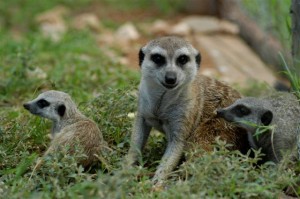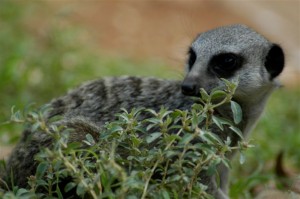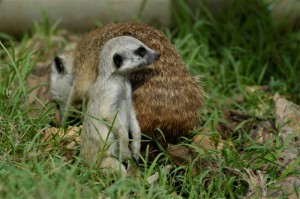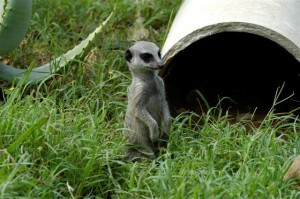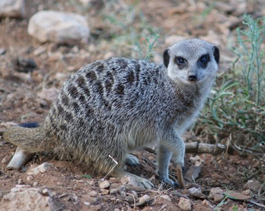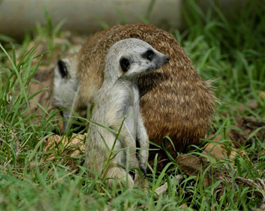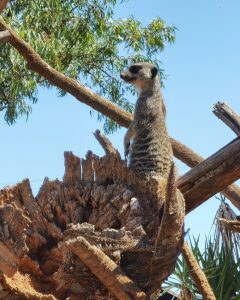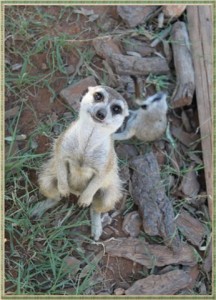Meerkats: Dee and the Rugrats

Come and meet our meerkats.
Our two little friends act as the welcoming committee for the guests coming on our predator tour. We have the two boys: “The Rugrats”. Unfortunately, their parents have now passed away due to old age, so it’s just the brothers, but luckily, they are very happy with one another!
Initially DCP did not intend to have any Meerkats at the facility as the aim is to help breed and protect our vulnerable, threatened and endangered wild cat species. Now Meerkats, even though the name suggest they are cat, are not cats, but indeed part of the Mongoose family. Meerkats are not regarded as an endangered species, but unfortunately they are so cute that often they are caught as small babies and taken home as pets. Unfortunately meerkats do not make the best house pets to keep, once they become unwanted pets they often end up at projects like DCP.
Now this is illegal in South Africa. No wild animal is allowed to be removed from the wild and kept as a pet. Unfortunately this happens more than it should all over the world.
Meerkats do not make good pets as they are well known for digging great big tunnels and holes. This is not restricted to only your garden… as they will also dig up flooring like carpet, tile and wood flooring.
The biggest problem when taking a meerkat as a pet is that they bond and become so attached to your family that you cannot simply leave them at home when you go on holiday and unfortunately they are also known to carry the disease called Rabies.
Meerkats are highly sociable, living in large family groups of between 10 and 40 members. In such a family there are a dominant pair (1 male and 1 female) wo run the show and make all the necessary decisions. It is also only this pair who will be allowed to mate and reproduce. Should the family decide to increase the size of the family quicker the dominant female will give permission to another female to mate and reproduce.
During the day the family heads out in search of food and whilst the family is searching there will always be a lookout or sentry. This individual’s job is to spot danger so that the family is alerted and have enough time to run for safety.
Meerkat burrows lead to underground tunnels and burrows were they sleep at night. These tunnels also act as s safehouse when danger is nearby. Once the sentry calls the alarm the entire family sprints back to the den or any place considered safe. Meerkat families will have between 6 and 10 different den sites within their territory and each den can have as many as 60 entry/exit holes. This ups their odds of getting to safety faster.
Get in touch for more information or if you would like to make a booking


